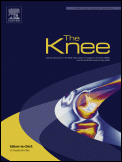
ARTHROPLASTY
Flexed femoral component offers greater postoperative knee flexion in knee arthroplasty
This report has been verified
by one or more authors of the
original publication.
Knee. 2014 Jan;21(1):257-63. doi: 10.1016/j.knee.2012.10.028. Epub 2012 Nov 24
39 patients (40 knees) undergoing primary cruciate-retaining total knee arthroplasty were randomized to receive a femoral component either in a 4° flexion in anterior femoral resection (flexed group) or with neutral resection (0° angle) (control group). The purpose of this study was to determine if postoperative knee flexion was increased in the flexed group. After 1 year, the flexed group was found to achieve significantly greater knee flexion compared to the control group. However, the functional outcomes and performance tests were similar between the two groups.
Unlock the full ACE Report
You have access to {0} free articles per month.Click below to unlock and view this {1}
Unlock NowCritical appraisals of the latest, high-impact randomized controlled trials and systematic reviews in orthopaedics
Access to OrthoEvidence podcast content, including collaborations with the Journal of Bone and Joint Surgery, interviews with internationally recognized surgeons, and roundtable discussions on orthopaedic news and topics
Subscription to The Pulse, a twice-weekly evidence-based newsletter designed to help you make better clinical decisions
Exclusive access to original content articles, including in-house systematic reviews, and articles on health research methods and hot orthopaedic topics
Or upgrade today and gain access to all OrthoEvidence content for just $1.99 per week.
Already have an account? Log in


Subscribe to "The Pulse"
Evidence-Based Orthopaedics direct to your inbox.
{0} of {1} free articles
Become an OrthoEvidence Premium Member. Expand your perspective with high-quality evidence.
Upgrade Now













































































